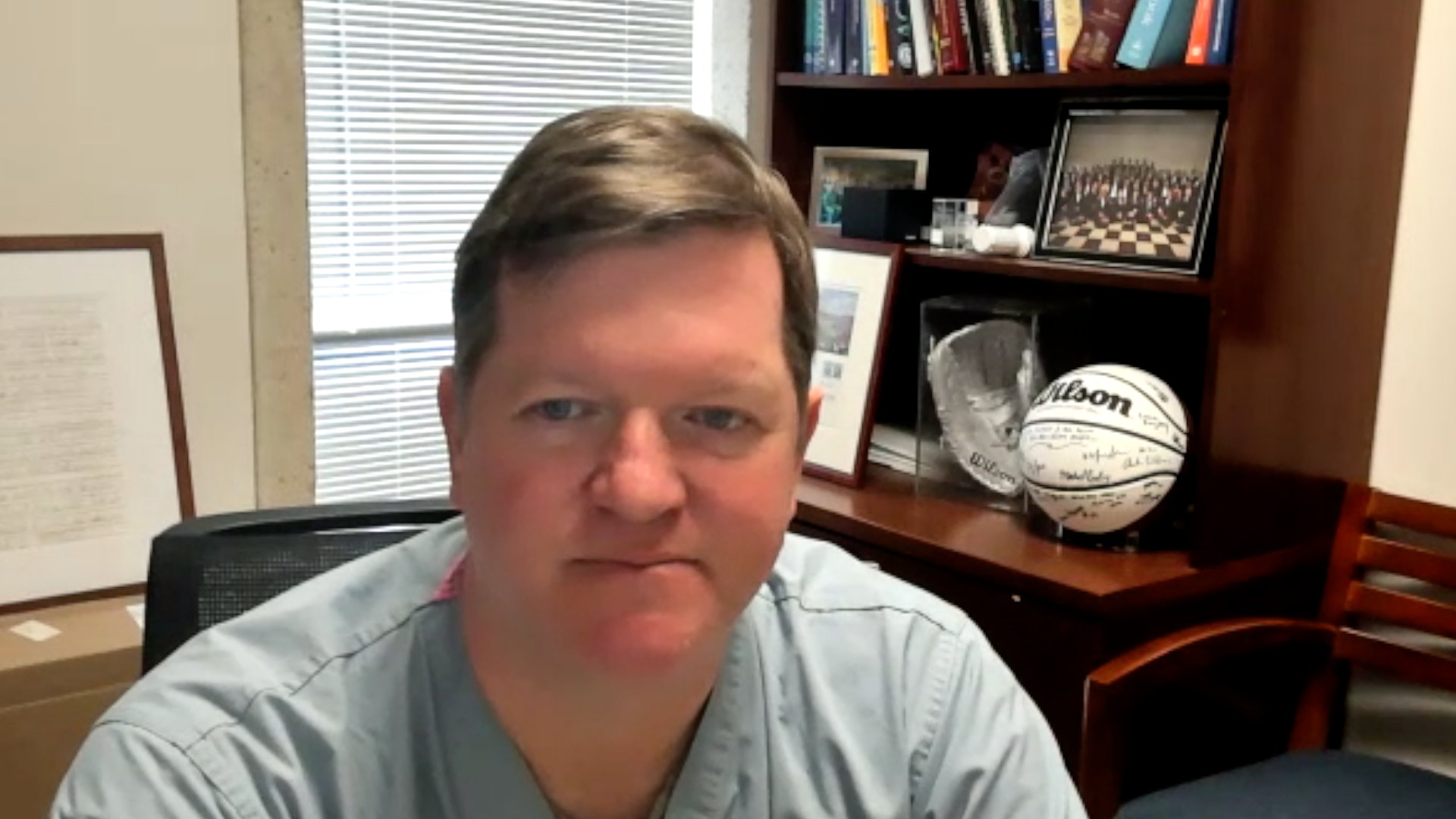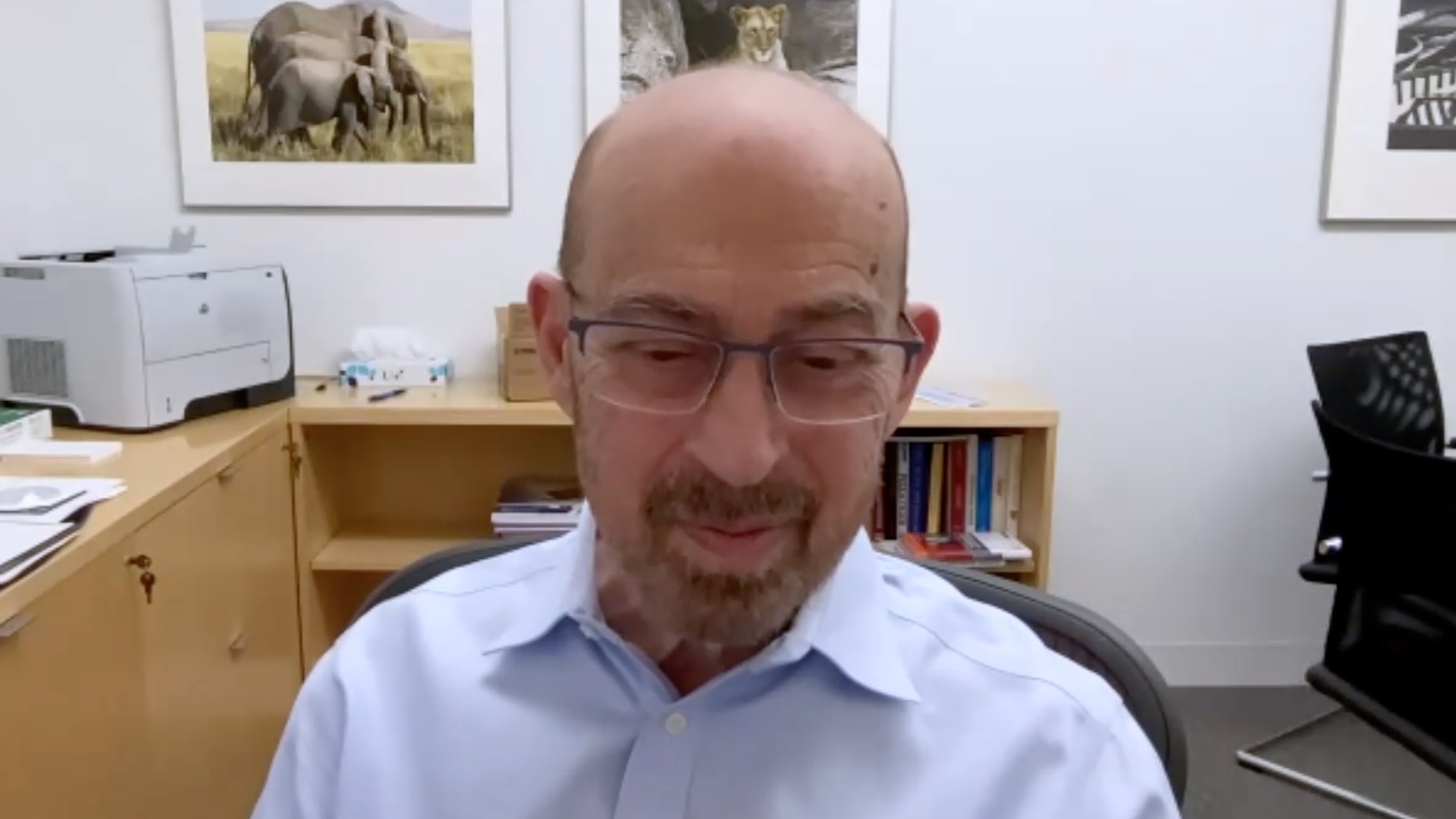John Forrest, ACC 2023: Evolut low risk trial, transcatheter versus surgical aortic valve replacement in patients at low surgical risk
The Evolut low risk trial aimed to compare transcatheter versus surgical aortic valve replacement in patients who were at low risk for surgery. In this touchCARDIO interview, we speak with Dr John Forrest (Yale New Haven Hospital, Yale University, New Haven, CT, USA) to discuss the eligibility criteria, the key findings and the outlook for the future.
The abstract entitled ‘Transcatheter Versus Surgical Aortic Valve Replacement In Aortic Stenosis Patients At Low Surgical Risk: 3-year Outcomes From The Evolut Low Risk Trial’ was presented at ACC.23 Together With WCC (ACC.23/WCC) in New Orleans, 4–6 March 2023.
Questions:
- What were the aims, design, and eligibility criteria of the Evolut Low Risk trial? (0:19)
- What were the primary endpoints and what were the key findings from the 3-year trial? (2:01)
- How might these results impact clinical practice and patient care for low risk patients needing heart valve replacements? (5:40)
- What do you consider the future directions for the development of TAVR technology? (6:28)
Disclosures: John Forrest is on the advisory board for and has received grant/research support from Edwards Lifesciences and Medtronic Inc.
Support: Interview and filming supported by Touch Medical Media. Interview conducted by Katey Gabrysch.
Filmed as a highlight of ACC 2023
Access more content on Cardiovascular Disease here
Transcript:
I’m John Forrest. I’m the Director of Interventional Cardiology and the Structural Heart Disease Program at Yale-New Haven Hospital at Yale University in New Haven, Connecticut.
Q. What were the aims, design, and eligibility criteria of the Evolut Low Risk trial?
The idea with the Evolut low risk trial was that it followed on from a number of trials that had come before it. The trials that had come before it had looked at transcatheter aortic valve replacement compared with surgery, first in patients who were high risk for surgery, then in patients who were intermediate risk for surgery. Finally, this study looked at patients who were at low risk for surgery. So the inclusion criteria were fairly broad. Patients had to have severe aortic stenosis and an indication for aortic valve replacement. They needed to have a trileaflet aortic valve and they needed to have anatomy that was suitable for both a surgical aortic valve replacement and a transcatheter aortic valve replacement. They needed to not have a dilated aorta or other things that would require other surgery. If they met those inclusions, they could be included in the study. There were a handful of exclusion criteria, including things like a recent stroke or a recent heart attack, coronary disease, that had a high syntax score and required coronary artery bypass graft (CABG) as opposed to percutaneous coronary intervention. But there was not an age cut-off for it. I should note, patients needed to have a trileaflet aortic valve. Therefore, patients who had a bicuspid aortic valve, which we see more frequently in younger patients than we do in older patients, were not included in this study.
Q. What were the primary endpoints and what were the key findings from the 3-year trial?
We have presented before the 1 and the 2 year results for this. This was the 3 year results. I think the reason that the 3 year results are important is because in this group of younger patients, the average age of these patients to put it into perspective was about 74, which is nearly a decade younger than patients who are in the intermediate and high risk groups. So in this group of younger patients, while we know that transcatheter aortic valve replacement has some early advantages, earlier recovery time etc., the question has been for younger patients who are going to live longer, whether it takes a couple of days to recover or a couple of months to recover. It is nice to recover in a couple of days, but that means that your outcomes longer term are not as good. Then, you have to weigh that in a younger patient. So these 3 year results are important in understanding how patients are doing in this intermediate time frame. These are not long term results by any stretch. That is important because patients come and they say, what should I have done? I am 72, 74 or 68 years old and I am low risk for surgery. I have two options. What is the data out there? And so that is what we wanted to look at here.
The primary outcome from the study was the incidence of all cause mortality or disabling stroke. What we have tended to see in prior studies is that while there is sort of an early benefit of patients who have tanscatheter aortic valve replacement (TAVR), or if you look at the primary outcome curves and start to follow them out to 3 and 5 years, you start to see the two curves coming together. That is what we wanted to look at here. What we actually found was that the two curves between years 2 and 3, and in fact from 30 days to three years, the curves have not started to come together. So at 30 days, the incidence of all cause mortality or disabling stroke occurred in 2.5% of the patients who had surgery and 0.7% of the patients who had a transcatheter valve replacement. So that difference, sort of the delta difference, is 1.8% at 1 year. That difference remained at 1.8% at 2 years, that was the difference, 2%. So 6.3% of the patients who had surgery had either died or had a disabling stroke versus 4.3%. When we went from 2 years to 3 years, we actually saw that difference went from 2% to 2.9%. So the number of patients at 3 years that had died or had a disabling stroke in surgery was 10.4%. If they had had a transcatheter aortic valve replacement, that was 7.4%. That number actually, the p value for that was 0.051, which was actually closer to being significant. If we call significant 0.05, then we were at either 1 or 2 years. And again, I think it is important to note this is for really hard endpoints all cause mortality or disabling stroke, things that really impact how patients are doing. If we add other endpoints into that, like rehospitalization, we see that we actually meet statistical significance. But I think the hard things like death or disabling stroke is what a lot of these patients want to know when we start to get further out.
Q. How might these results impact clinical practice and patient care for low risk patients needing heart valve replacements?
I think the data, as I talked about earlier, shows that more patients are having transcatheter aortic valves than are having surgical valves these days. So I do not know that this necessarily changes clinical practice because a lot of patients are having transcatheter aortic valve replacement. But I think it reaffirms that we are doing the right thing for these patients by sitting down and having a shared decision making process with them, talking about what the options are. Most patients are going to say I would rather have a transcatheter option. I do not want to have open heart surgery and go have a sternotomy and the recovery from that. I think we can become comfortable now when those patients are saying that at three years, this is the results that you get using this valve platform.
Q. What do you consider the future directions for the development of TAVR technology?
I’ll break it into two parts. First, we need to keep following these patients. We will show what the 5 year results are. We will follow these patients all the way out to 10 years because we want to understand that. We also know that there are subtle differences that we saw in the results. So, for example, patients who had surgery had a lot more atrial fibrillation. Conversely, patients who had a transcatheter valve in this study had a higher incidence of needing a pacemaker. How do those play out over time? We will have to see. There is new technologies that are coming out. Some of these patients are going to need to have a second valve put in, whether they had surgery or a transcatheter valve. How we treat a failing transcatheter valve is something that is being developed right now. We know for a failing surgical valve, we can put a transcatheter valve inside that. But how we treat a transcatheter valve can be more complex because of the way that these valves are designed, where the leaflets are. With this system, you have the benefit of having a supra annular valve that gives you better hemodynamics. Hopefully it is going to result in these valves lasting longer and patients doing better. But some of these valves will fail after 10 or longer years, and when they do, how do we best treat that? So those are some areas of ongoing research and ongoing investigation.
This is exciting data for the field and even more so for patients. I think if we look at how we have come to understand patients with aortic stenosis, how to treat them, and what anatomy is suitable for a transcatheter procedure. I think what we saw in this study, the incidence of paravalvular leak, which is something that we saw a little bit higher frequency of in early studies with valve designs that have changed and with proper patient selection, the difference in greater than mild paravalvular leak between transcatheter and surgical. Using this valve was no different and that just speaks to the advances that have been made. There are still more advances to make and that is the fun thing about early technology, we see them continue to iterate fairly rapidly. Every 3 or 4 years we get a new generation of device that makes it easier to deliver, position/reposition or it seals better. That is really great for not just the provider who is doing the procedure, but most importantly for the patient who is going to benefit from it.
Subtitles and transcript are autogenerated






